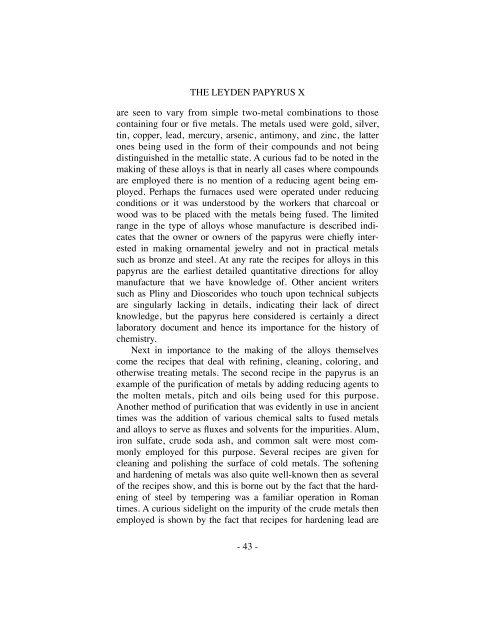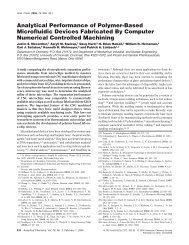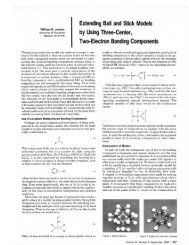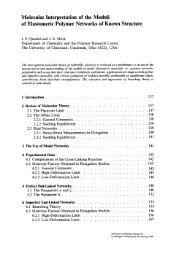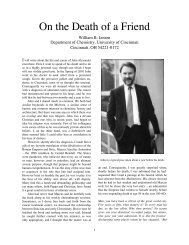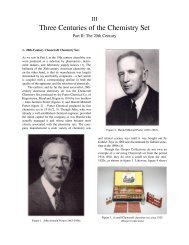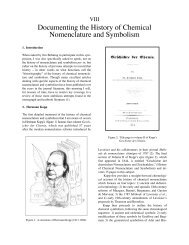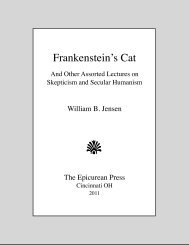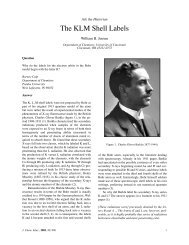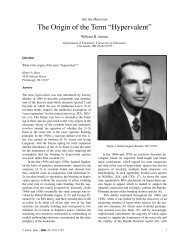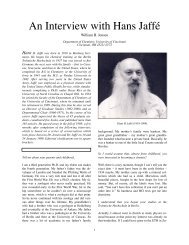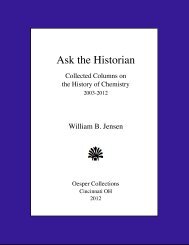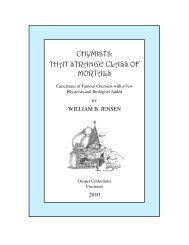The Leyden and Stockholm Papyri - University of Cincinnati
The Leyden and Stockholm Papyri - University of Cincinnati
The Leyden and Stockholm Papyri - University of Cincinnati
Create successful ePaper yourself
Turn your PDF publications into a flip-book with our unique Google optimized e-Paper software.
THE LEYDEN PAPYRUS X<br />
are seen to vary from simple two-metal combinations to those<br />
containing four or five metals. <strong>The</strong> metals used were gold, silver,<br />
tin, copper, lead, mercury, arsenic, antimony, <strong>and</strong> zinc, the latter<br />
ones being used in the form <strong>of</strong> their compounds <strong>and</strong> not being<br />
distinguished in the metallic state. A curious fad to be noted in the<br />
making <strong>of</strong> these alloys is that in nearly all cases where compounds<br />
are employed there is no mention <strong>of</strong> a reducing agent being employed.<br />
Perhaps the furnaces used were operated under reducing<br />
conditions or it was understood by the workers that charcoal or<br />
wood was to be placed with the metals being fused. <strong>The</strong> limited<br />
range in the type <strong>of</strong> alloys whose manufacture is described indicates<br />
that the owner or owners <strong>of</strong> the papyrus were chiefly interested<br />
in making ornamental jewelry <strong>and</strong> not in practical metals<br />
such as bronze <strong>and</strong> steel. At any rate the recipes for alloys in this<br />
papyrus are the earliest detailed quantitative directions for alloy<br />
manufacture that we have knowledge <strong>of</strong>. Other ancient writers<br />
such as Pliny <strong>and</strong> Dioscorides who touch upon technical subjects<br />
are singularly lacking in details, indicating their lack <strong>of</strong> direct<br />
knowledge, but the papyrus here considered is certainly a direct<br />
laboratory document <strong>and</strong> hence its importance for the history <strong>of</strong><br />
chemistry.<br />
! Next in importance to the making <strong>of</strong> the alloys themselves<br />
come the recipes that deal with refining, cleaning, coloring, <strong>and</strong><br />
otherwise treating metals. <strong>The</strong> second recipe in the papyrus is an<br />
example <strong>of</strong> the purification <strong>of</strong> metals by adding reducing agents to<br />
the molten metals, pitch <strong>and</strong> oils being used for this purpose.<br />
Another method <strong>of</strong> purification that was evidently in use in ancient<br />
times was the addition <strong>of</strong> various chemical salts to fused metals<br />
<strong>and</strong> alloys to serve as fluxes <strong>and</strong> solvents for the impurities. Alum,<br />
iron sulfate, crude soda ash, <strong>and</strong> common salt were most commonly<br />
employed for this purpose. Several recipes are given for<br />
cleaning <strong>and</strong> polishing the surface <strong>of</strong> cold metals. <strong>The</strong> s<strong>of</strong>tening<br />
<strong>and</strong> hardening <strong>of</strong> metals was also quite well-known then as several<br />
<strong>of</strong> the recipes show, <strong>and</strong> this is borne out by the fact that the hardening<br />
<strong>of</strong> steel by tempering was a familiar operation in Roman<br />
times. A curious sidelight on the impurity <strong>of</strong> the crude metals then<br />
employed is shown by the fact that recipes for hardening lead are<br />
- 43 -


